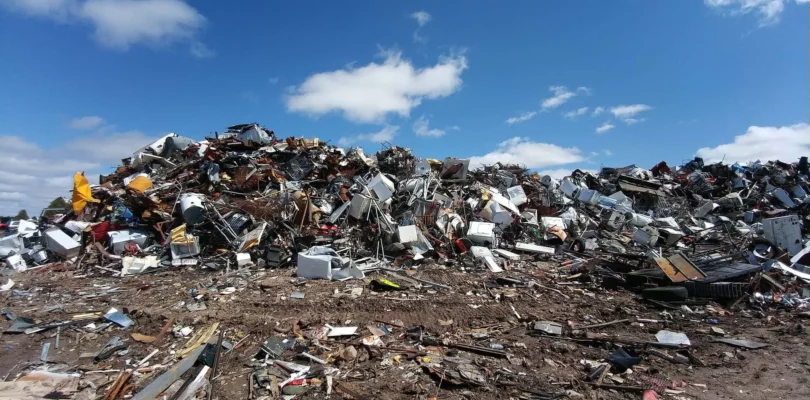By Sunny Lewis
NEW YORK, New York, September 22, 2015 (Maximpact News) – The largest public pension fund in the United States, the California Public Employees’ Retirement System (CalPERS), with upwards of US$300 billion in assets, takes sustainability seriously.
Just days ahead of a United Nations summit in New York that will adopt new Sustainable Development Goals to guide international efforts through 2030, CalPERS has joined the UN Environment Programme (UNEP) in issuing a report that calls on regulators to build a new culture of sustainable investing.
Entitled “Financial Reform, Institutional Investors and Sustainable Development: A review of current policy initiatives and proposals for further progress,” the report calls for proactive policies putting sustainability at the core of new institutional investment frameworks.
Henry Jones, who chairs the CalPERS Investment Committee, said, “At CalPERS we have no doubt that our focus on sustainability is entirely consistent with our fiduciary duty – indeed it is an essential part of it.”
Henry Jones heads CalPERS Investment Committee (Photo courtesy CalPERS)
“Where doubts on this score remain, they must be dispelled,” Jones said. “And we need institutions that have the knowledge, the skills and the ways of working that are required to embed sustainability in their investments – to manage the risks it brings, and to capitalize upon the opportunities it offers.”
In his forward to the report, Jones writes, “Of all the sustainability challenges we face, climate change is one of the most pressing.”
“This report is being published just a few weeks before the Paris Climate Change Conference. At CalPERS, we earnestly hope the world’s governments will reach an ambitious global agreement to address climate change. Bold action is needed in particular to introduce stable, reliable and economically meaningful carbon pricing, and to strengthen regulatory support for clean energy. This will enable us, as investors, to manage the risks and take the opportunities that climate change brings. We hope every country will reflect on how it can best address these challenges,” Jones wrote.
The report’s author, Rob Lake, is a UK-based independent responsible investment advisor and expert, working with asset owners.
With an estimated annual financing gap of up to US$7 trillion a year in infrastructure investments alone, the global financial system, worth more than US$300 trillion, has a potential to transform the international economic landscape to better serve the needs of humanity, Lake’s report concludes.
The report had its genesis in the Inquiry into the Design of a Sustainable Financial System initiated by UNEP in January 2014 to advance policy options that could improve the financial system’s effectiveness in mobilizing capital towards a green and inclusive economy.
Nick Robins, who serves as co-director of UNEP Inquiry, said, “A package of measures is needed to deliver the full sustainability potential of institutional investors. Disclosure is important, but without effective governance frameworks and incentives, this will not drive sufficient change.”
The report shows that policy intervention has evolved from focusing on disclosure obligations and statements about investors’ core legal duties to a “second generation” approach that addresses the synergy between sustainability and other policy objectives.
Solar panels on the roof of CalPERS’ Sacramento, California headquarters generate some of the electricity that powers the building. (Photo courtesy CalPERS) – Building for the Future, Protecting the Environment.
Seven critical policy objectives that hold the strongest potential for positive change are explored in the report together with 14 policy tools to achieve them.
The seven policy objectives are:
- Aligning Institutional Investment System Design with Sustainability
- Removing Policy Barriers
- Stimulating Demand for Investment that Integrates Sustainability
- Strengthening Asset Owner Governance and Capabilities
- Lengthening Investment Horizons
- Aligning Incentives along the Investment Chain
- Ensuring Investor Accountability
The 14 policy tools are:
- The Design of Pension Systems Investment
- Performance Measurement
- The Legal Duties of Investment Institutions
- The Legal Duties of the Directors of Risk-Taking Financial Institutions
- Solvency and Risk Regulations
- Prudential Regulation
- Investor Disclosure Rules
- Corporate Disclosure Rules
- Fiscal Incentives
- Rules on Equity and Credit Research
- Investor Rights, Codes and Stewardship
- Risk Mitigation and Market Development for Green Assets
- Soft Law Sustainability Frameworks
- Professional Qualifications and Knowledge Transfer
The report concludes, “Enormous potential exists to pursue new policy initiatives designed to achieve sustainability goals through the institutional investment chain while simultaneously strengthening other public policy objectives: better governed asset owner institutions that serve their beneficiaries more effectively, enhanced prudential regulation, increased economic welfare meeting energy, water and food needs, and restored public trust in the financial system.”
Award-winning journalist Sunny Lewis is founding editor in chief of the Environment News Service (ENS), the original daily wire service of the environment, publishing since 1990.
